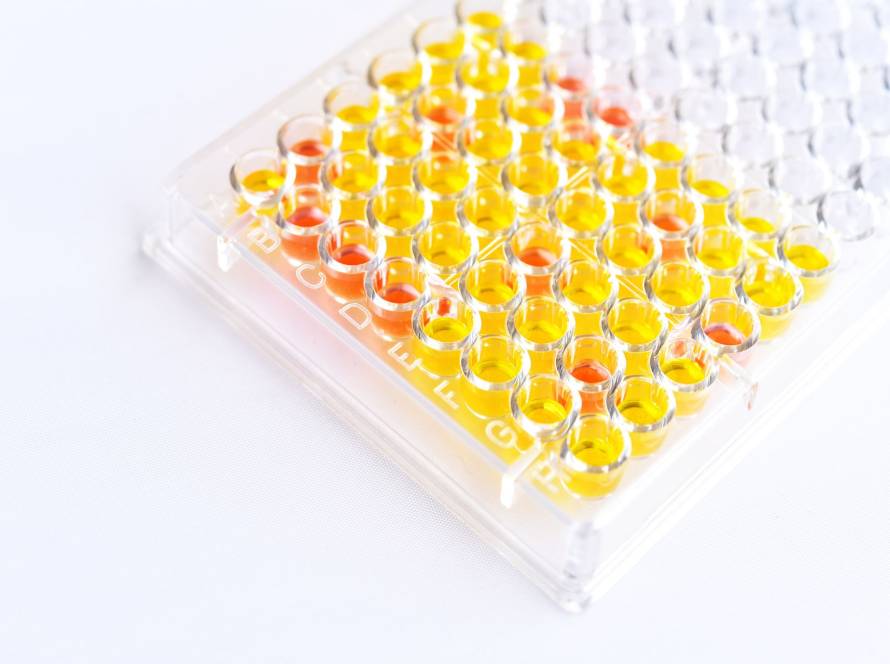Scientists have found that certain epigenetic changes are reversible. This finding challenges everything we knew about how our genes respond to environmental factors. The evidence raises a vital question: can we reverse epigenetic changes throughout human biology?
Let’s look at the science behind epigenetic changes and how they affect aging and health. We’ll explore ways to reverse these modifications through natural methods and medical treatments.
The basics of epigenetic modifications
Epigenetic modifications add a captivating layer of genetic control that works without changing the DNA sequence itself. These modifications act like molecular switches that determine if genes turn on or off and shape our cellular functions and overall health.
DNA methylation explained
DNA methylation remains one of the most researched epigenetic mechanisms. This process adds methyl groups to the fifth carbon of cytosine residues in CpG dinucleotides.
DNA methylation follows a specific pattern throughout our genome. Research shows 70-80% of cytosines are methylated. These modifications cluster in specific regions called CpG islands. Each island spans about 200 base pairs and has a GC content that’s more than 55%.
DNA methylation shapes gene expression through two main mechanisms:
- Direct blockage of DNA binding proteins that activate transcription;
- Recruitment of methyl-binding proteins that bring in transcriptional suppressors.
Methylation patterns change by a lot across genomic regions. Studies show methylation in promoter regions usually stops gene expression. The opposite happens when promoter areas have low methylation and gene bodies show higher methylation, associated with active gene expression.
Histone changes and their effects
Histone modifications are vital epigenetic mechanisms that shape gene activity. According to studies, these changes happen through different chemical processes like acetylation, methylation, phosphorylation and ubiquitination.
Histone modifications effects depend on their type and location. To name just one example, histone acetylation helps gene expression by loosening the bond between histones and DNA. Histone acetyltransferases (HATs) do this by adding acetyl groups from acetyl-CoA to lysine residues in histone tails.
The connection between DNA methylation and histone modifications deserves special attention. DNA methyltransferases interact directly with enzymes that control histone modifications.
RNA associated silencing
RNA associated silencing is a key epigenetic mechanism that regulates gene expression without altering the underlying DNA sequence. This process helps control cell function, development and response to environmental changes. RNA silencing plays a crucial role in maintaining genome stability, suppressing harmful gene activity and even protecting against viral infections.
How epigenetic changes affect longevity
Scientists have found that changes in DNA organization and regulation affect aging, even without changes to the genetic code itself. This discovery changes how we think about what makes us live longer.
Impact on aging process
DNA methylation patterns show big changes as we age. Research shows that newborns have the highest DNA methylation levels, which drop as people get older. Twin studies reveal that genetic factors explain only 20-30% of lifespan differences between identical twins. Epigenetic drift causes most differences throughout their lives.
The aging process shows up mainly through:
- Loss of heterochromatin that changes global nuclear architecture;
- Lower histone protein levels that affect gene expression;
- More DNA damage.
Disease development
Studies show that epigenetic changes affect how various metabolic conditions develop. Science confirms these modifications are vital in:
- Diabetes and its complications;
- Obesity;
- Non-alcoholic fatty liver disease;
- Osteoporosis.
Cellular memory
Cell memory forms the foundation of epigenetic regulation. Cells keep their gene expression patterns even after the original environmental signal stops. Epigenetic factors maintain transcriptional programs when cells divide.
Cells maintain their memory through multiple ways:
- DNA methylation patterns preserved by DNA methyltransferase 1 (DNMT1);
- Histone modifications that regulate chromatin structure;
- Non-coding RNA regulation affecting gene expression.
However, aging changes these enzymes abundance and activity, which alters the epigenome. This creates differences in epigenetic information inside individual cells, leading to transcriptional drift and genomic instability.
Cell memory shows amazing flexibility during development and after birth. It responds to environmental factors and experiences. Epigenetic changes often happen early in diseases, which makes them promising clinical biomarkers.
Studies show that scientists can reverse epigenetic changes, unlike genetic ones. This offers hope to reduce risks of developmental problems, cancer and neuropsychiatric disorders. The medical field now explores various treatments based on this understanding.
Natural methods for epigenetic reversal
New research shows that lifestyle changes can reverse harmful epigenetic changes. This discovery opens new ways to live longer and healthier lives.
Nutrition strategies
Research proves that what we eat affects our DNA methylation patterns. Methyl donating foods like choline and folate help maintain proper DNA methylation status. People who eat lots of vegetables, fruits, whole grains and nuts while cutting down on added sugars and saturated fats show slower epigenetic aging.
Scientists have found specific bioactive compounds that help prevent cancer through epigenetic mechanisms. These compounds block DNA methyltransferases directly or control enzymatic substrates indirectly.
Physical activity benefits
Exercise changes epigenetic patterns, especially in skeletal muscles. Scientists have found that physical activity changes core clock genes in specific tissues. Regular exercise leads to:
- Better metabolic efficiency;
- Better oxidative capacity;
- More contractile activity.
Research shows that just 15 minutes of daily exercise cuts the risk of death from any cause by 14% compared to no exercise. How hard you exercise and how long you do it changes inflammatory responses and epigenetic modifications.
Sleep optimization
Sleep quality plays a big role in epigenetic age acceleration. A study of 692 Korean adults showed that poor sleep speeds up epigenetic aging. Bad sleep affects:
- RNA modification;
- Chromatin remodeling;
- Histone and DNA methylation.
Not getting enough sleep changes the epigenetic and transcriptional profile of core circadian clock genes in key metabolic tissues. Regular sleep patterns help maintain optimal epigenetic regulation.
Stress reduction techniques
Mental stress affects sickness and death rates through epigenetic modifications. Mindfulness practices help manage stress induced epigenetic changes. Research shows mindfulness meditation works through:
- Attention regulation;
- Body awareness;
- Emotion regulation;
- Changes in self perspective.
Brain imaging studies confirm that mindfulness changes brain structure in areas like the anterior cingulate cortex and frontolimbic network. Mental health interventions can reverse stress induced changes across the genome.
Natural interventions work together to reverse epigenetic changes. Long term lifestyle changes lead to lasting improvements in epigenetic patterns.
Scientific breakthroughs in epigenetic research
New findings in epigenetic research have revealed promising ways to treat various diseases by targeting specific modifications. A key study in Nature Communications shows how mouse proteins can disrupt cancer causing chemical changes in genes linked to colorectal cancer cells.
Scientists have found a ‘traffic light’ system that controls genetic activity in cells. This system could be targeted by cancer drugs that are now being developed. The process involves H3K4me3, which is a vital regulator that determines when and how DNA gets read and made into proteins.
There was DNA methylation that helps tumors grow just like genetic mutations do.
Clinical trials
Scientists have made good progress in developing treatments that target epigenetics. Right now, at least 20 structurally different Histone deacetylases (HDAC) inhibitors are being tested in clinical trials. These trials test the drugs alone and in combination with other treatments for blood related and solid cancers.
The Federal Drug Administration approved Vorinostat in 2006. This marked a major milestone as the first HDAC inhibitor doctors could use to treat advanced cutaneous T cell lymphoma. Panobinostat (LBH589) also was approved to treat multiple myeloma, in 2025.
Scientists have made a breakthrough using lipid nanoparticle therapy. This method delivers mSTELLA peptide as mRNA to cells, much like COVID-19 vaccine technology. Tests in mice show great results, it activates tumor suppressor genes and slows tumor growth.
Epigenetic changes often happen before diseases develop. This creates chances for early detection and treatment. Scientists are learning about DNA methylation patterns to predict how well treatments might work. MGMT hypermethylation, for example, best predicts how gliomas will respond to Carmustine (BCNU) and temozolomide.
This deeper knowledge of cancer epigenomes helps create better drug combinations, especially when mixing epigenetic therapy with other treatments.
Natural methods combined with medical treatments give us multiple ways to modify epigenetic patterns. Simple lifestyle adjustments trigger positive epigenetic responses in our bodies. Advanced therapeutic techniques provide additional options when more targeted interventions are needed.
Epigenetic changes are a powerful way to extend our healthspan and enhance life quality. The field grows faster every day. Scientists continue to find new ways that environmental factors affect gene expression and how we can reverse these changes.
Learn more about:


